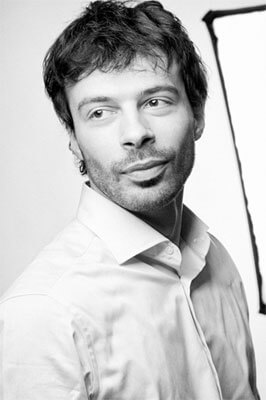Francesco Ridolfi is an Italian portrait photographer who usually shoots for advertising and editorial projects. Born and raised in Bologna, Italy, he now splits his time between Brussels, Milan and Bologna, working for different clients and assignments in the editorial and commercial field. Some of his most recent clients includes: Rolling Stone Magazine, Auchan, Louis Vuitton and Tetra Pak.
All about Francesco Ridolfi:
AAP: When did you realize you wanted to be a photographer?
The photography passion came to me long ago, since I was a child. But maybe I started to realize it could be turned into a profession around the 2006.
How long have you been a photographer?Professionally speaking, since 2008.
What or who inspires you?
Well, maybe it could sounds expected, but for me inspiration is everywhere! I think that the process of developing an idea it's like connecting dots. More dots you have (experiences, visual references, interests,..) more chance to come out with something original and great!
How could you describe your style?
I'm pretty sure it could be described as clean and precise. And actually it's what I'm looking for in my photos. I prefer to take away instead of add something: less is more for me.
Do you have a favorite photograph or series?
Speaking of my work, for the efforts done, I surely like the Chess Portraits here presented. But from my previous works, I'm attached to a
John Landis' portrait I took a couple of years ago and a series of black and white portraits I took in Cuba
Cublanco
Do you spend a lot of time editing your images? For what purpose?
Actually not so much, I prefer to do as much as possible on camera. The editing process consists mainly in color correction and general cleaning of the photos.
Favorite(s) photographer(s)?
Erwin Olaf, Martin Schoeller, Richard Avedon.
What advice would you give a young photographer?
If I had to suggest something to a young or an aspirant photographer, for sure I will advice him of the importance of the profession's business side. It's something you have to take really seriously, if you want to survive out there.
What mistake should a young photographer avoid?Think that to be a photographer (and making a living with it) it's enough just take good pictures.
An idea, a sentence, a project you would like to share?
Less is more. But also, try to convey an idea through your photos. An idea adds much more than technique and Photoshop.
About "Room 322""The airy luminosity of an ethereal space, aseptic and suspended, contrasts with the stolidity of these bodies - less than perfect in their awkward and authentic humanness. Statically present, the hotel room preserves its non-connection to sundry turn-taking occupants: its stillness heightens the tension they feel inside, which rips itself free of these contentless surroundings. Thus, from the bottom of a bathtub, contrasting perceptions emerge: appearance and reality, restlessness holding itself still, past within present; authenticity within fiction."
